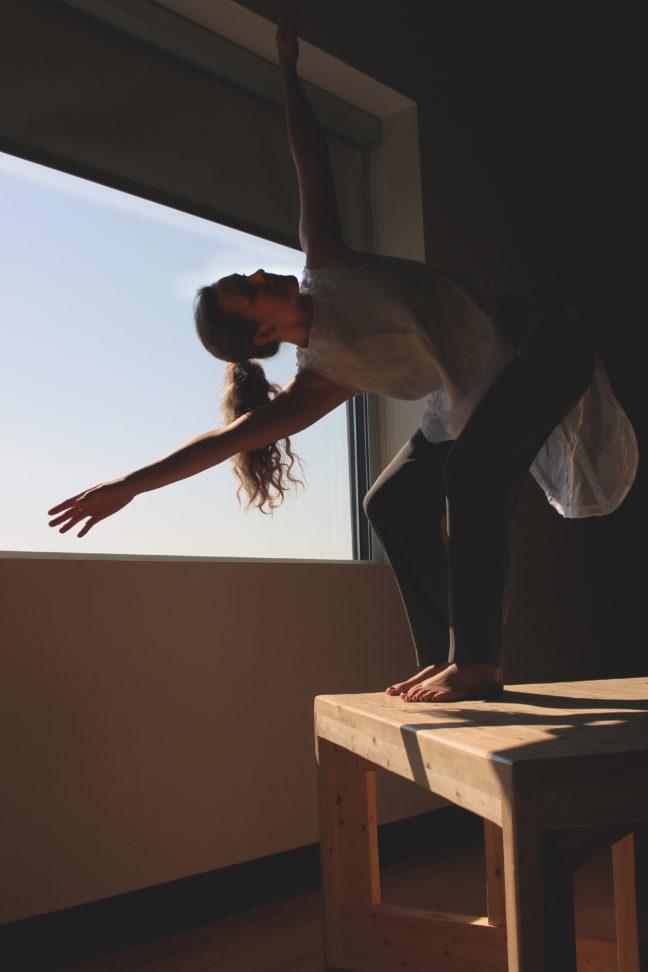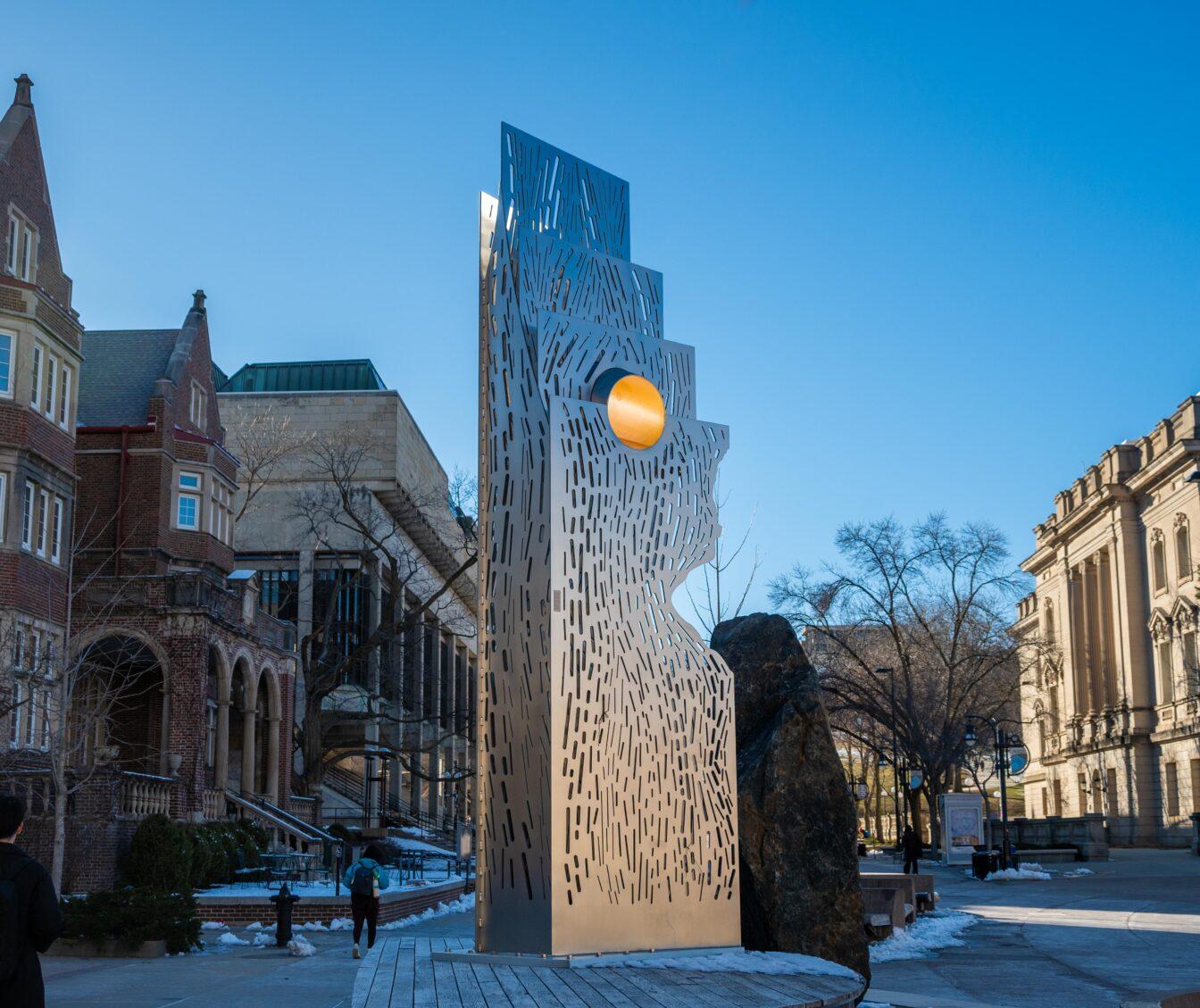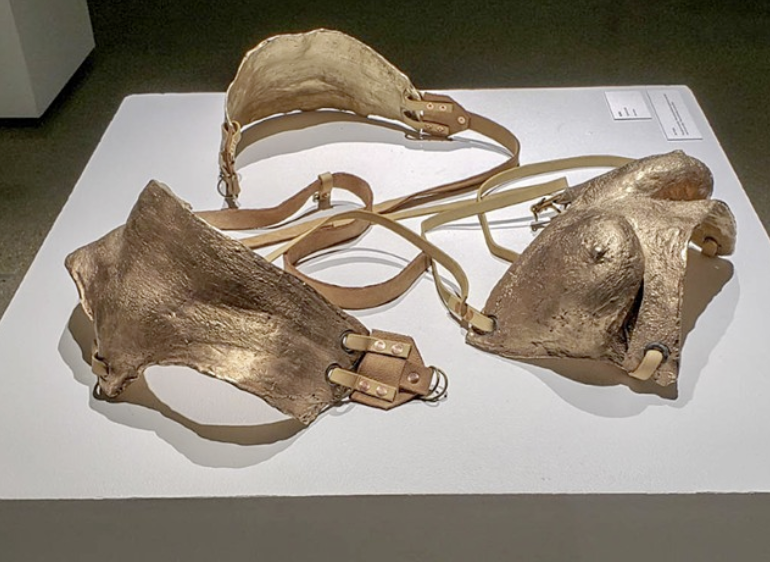This Friday, Tangible Space, a performance at the Madison Museum of Contemporary Art, will showcase a collaboration between two artists: Photographer Sonja Thomsen and choreographer Maria Gillespie. Together they are linking movements between dance, light and time in an immersive experience that refuses to be static. The Badger Herald spoke with Thomsen about the performance and her work as an artist.
Badger Herald: Have you been closely collaborating with Maria Gillespie, or has this been more of a solo response, on her behalf, of your work?
Sonja Thomsen: It’s our first time working together. She did a performance at a space that I ran in Milwaukee and she was the first person I thought of when we were brainstorming programming. It’s been really important for me for this installation to have programming that engages multiple ways of knowing.
I had a conversation with a physicist, and I think there’s going to be a discussion with psychologist from UWM along with Maria performing and dance, and I’m really interested in the way that you can know something intellectually and know something of the body and the relationship between a felt experience or a physical manifestation of experience, or a kind of cognitive, intellectual understanding experience.
I invited Maria to the space knowing her work was dealing with these platforms — localizing movement on small stages — and I immediately thought it’d be interesting to see these stages in the space and how she would respond. It’s hopeful she would respond to the idea of improv and being a part of her process. When she came to the space, we talked about my ideas in the installation, and there’s this interest in manifesting body knowledge through movement and space. She was super excited and got it right away when we walked through the space.
Conversation Starter: Local Madison band talks new EP, music recognition
I talked about materiality of what’s in the space and seeing the images, but also experiencing the thing itself in the space and the way the light is reflecting and refracting in the space and how form is changing as you move in relationship to it. We immediately dove into thinking what the dances would be and how the dancers could reflect and refract each other’s movements throughout the multiple levels of the space and for people to move and not watch the performance in a static way. We hope for viewers to move through the space as the dancers are performing.
This is Maria’s choreography and her vision of an interpretation of my work in terms of what the movement is doing. The musician is someone she’s worked with and I’m really interested and excited because I’ve always loved cello. Maria gave him a zine that I made for the show and he’s been interpreting that zine page by page to create the sound. They’ve been planning their movement around the sound that he creates. The visual is leading the audio and then the movement. I’m really excited to see what comes of it.
BH: As an artist you manipulate light and vision throughout your work. What is it about this practice that appeals to you so much?
ST: That’s a harder question I think. To be concise about it, I think it’s something I’m always chasing. I’m really interested in discovery and I’ve been researching a lot of light and space artists along with that movement and making the act of perception and seeing the experience of the art and how to do that. As a photographer, you’re trained to control light and time. Those are elements, in which controlling those elements, you make pictures and then construct this static, two-dimensional illusion of a three-dimensional space. I’ve realized I’m starting to work backward from that, where I’m moving between three-dimensional and two-dimensional space and then interested in how light itself becomes the material. It’s exciting because it’s dynamic and it’s always changing. There’s a lot of improv and spontaneity that happens on site.
I think there’s a relationship between my interest in movement and love and passion for photography. I also am captivated with the idea of being able to respond to it instead of something being static. Light marks time and I’m interested, in my installation, that it’s a time based experience for people. Your movement through the piece is how the whole piece comes together.
The most interesting conversations I’ve had with people is when they move up into the space and back down through the stairs and after moving and taking that entire journey, the way that time and their movement through the space, is that it creates and produces the whole experience. I’m using light and time as something to get people to linger. Light is something that we all have a connection to — an intimate relationship with the idea of the sun and the feeling of the sun, and I like that.
Conversation Starter: Margaret Cho on her career, new comedy tour
BH: Back to the physical element of the performance — how does it feel to have a dance element knowing that you used to be a dancer yourself?
ST: It’s so exciting. I’m so pleased that I’ve had an opportunity to explore many disciplines and have this cross-discipline discussion within the space that I’ve created. I was a double major with science and studio art in undergrad, so the fact I got to have a discussion with this amazing physicist was really exciting, and the entire time I’ve been dancing (since I was six years old until I graduated from undergrad), I’ve always been interested in movement. My students always tell my that I dance when I teach.
I’m so, so excited and I hope this is the beginning of collaborations with dancers and thinking about movement. I’m really excited about what I’ll learn from the performance. It’s scheduled for 7 p.m., so it’s that transitional time of day. As the performance is happening we’ll experience darkness in a way — lighting will sculpt the space, especially thinking about how the performance itself will change from September to the second one in October. I’m excited what the dancers will learn from the space. It’s a big experiment, but it’s really exciting.
BH: Do you have anything else in the works or plans for more projects?
ST: I’m having a videographer film the performances, and I also want to document it and think about how I can link images of the dances and the space and how that could generate a new project or idea. But, I also want to experience it and when I’m making pictures I don’t experience the whole thing. Im currently working on a project about Mary Nohl for the John Michael Kohler Art Center.



















